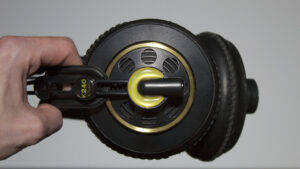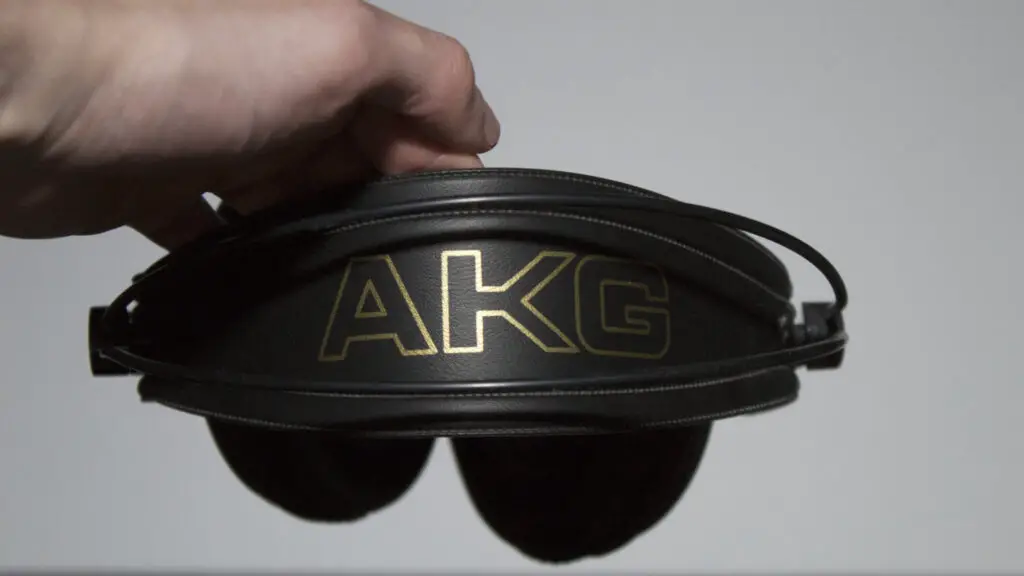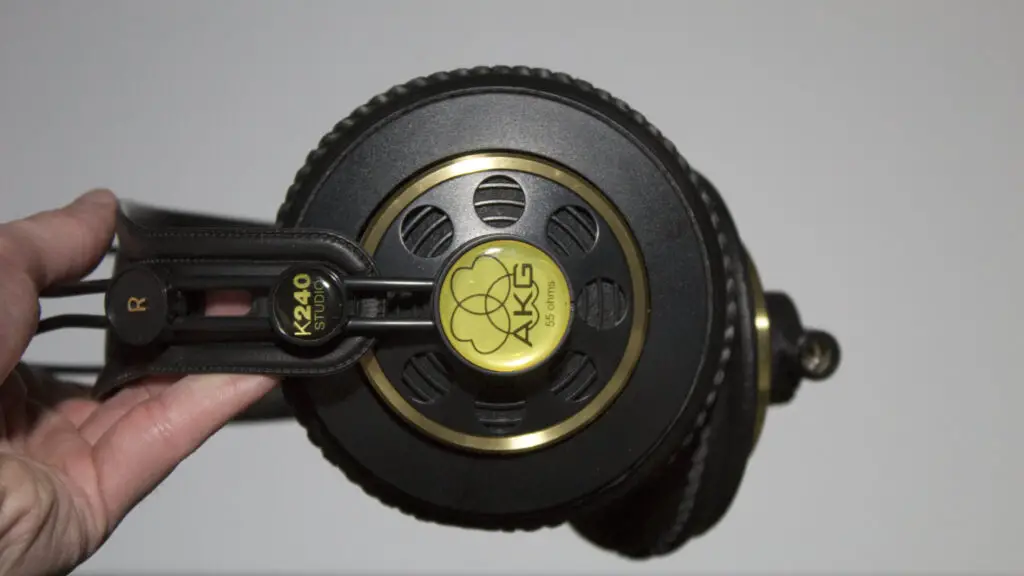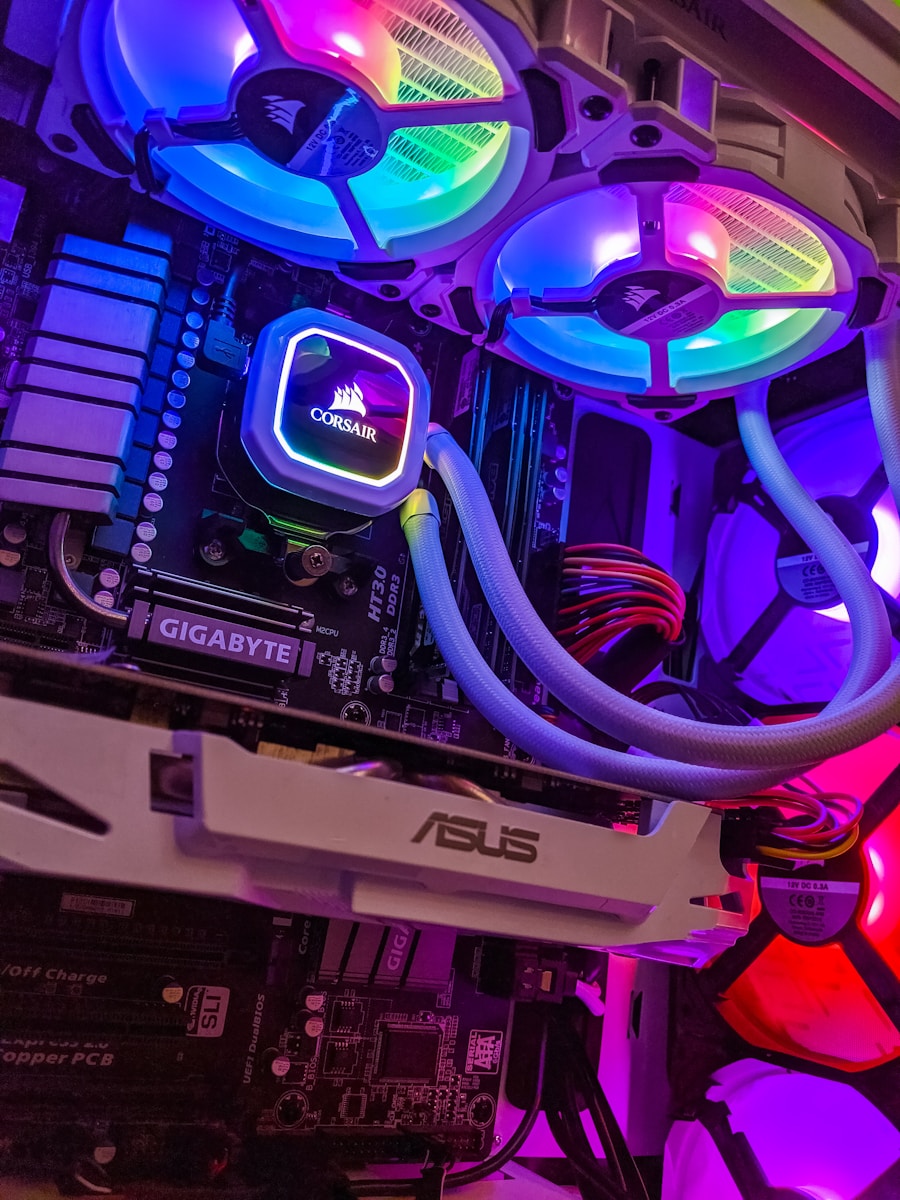AKG K240 Review | Music Production, Mixing & Mastering | Decibel Peak

That’s why I decided to write this AKG K240 review.
Product In-Stock: InStock
3
I was actually just about to sell my AKG K240s, but I found another use for them!
That’s why I decided to write this AKG K240 review.
In regards to sound, I can’t say that these semi open-back headphones are the best I’ve ever worked with. However, I found out that an affordable pair of open-back headphones such as the K240s would be perfect to practice drums with.
That’s right, I use the AKG K240s to practice (not record) drums with.
Considering what I paid for them, I’m not too disappointed that these headphones will be used only for that purpose. That being said, I don’t recommend them for music production.
You can check out my guide on the best headphones for music production HERE.
If you want to find out more, keep reading the rest of this article…
- What I like about the AKG K240
- What I don’t like about the AKG K240
- AKG K240 vs K240 MKII
- AKG K240 vs PreSonus HD7
- AKG K240 vs Samson SR850
- AKG K240: Frequently Asked Questions (FAQ)
- Summary: AKG K240 Review
What I like about the AKG K240
Before telling you what I don’t like about the AKG K240s, I’ll start by highlighting some of the things I like most about them.
I have to admit that there’s nothing better at this price point (but I’d go a little higher)…

The AKG K240s are lightweight and comfortable
Honestly, when I wear these headphones… I forget that I have them on!
The AKG K240s are SUPER comfortable and incredibly lightweight. If you plan to use these for long periods of time, you won’t be disappointed.
However, I do admit that they feel kind of cheap…
One of the reasons I enjoy practicing drums with these is because I forget that I even have them on. The semi-open back design also makes them more “breathable” so that your ears don’t get sweaty when you start digging into your practice time.
In my opinion, the semi-open back design also makes these optimal for HEARING your drum kit while practicing. The typical closed-back headphones won’t give you an accurate representation of what you’re doing.
The AKG K240s are loud enough for me to hear my metronome AND drum kit.
However, I do wish that they were just a TAD louder (when used without a headphone amplifier).
The AKG K240s sound great for casual listening
If you just want to use the AKG K240s to listen to music, you won’t be disappointed!
That being said, I personally can’t work with them for mixing and mastering. The frequency response isn’t well-balanced (especially lacking in the bottom-end) and the high-frequencies aren’t as accurate as they should be.
I’m not surprised, but it’s a fair warning for you music producers out there…
However, I still enjoy listening to music on these.
One of the main advantages of open-back (and semi open-back) headphones is that the music sounds more life-like. We refer to this phenomenon as “soundstage”.
Typically, closed-back headphones are lacking in this area.
However, I wouldn’t personally bring your AKG K240s out in public with you.
Open-back headphones allow some of the sound to escape, so someone next to you (or even in the same room) will hear your music. Similarly, a microphone positioned in close proximity to you will also hear what you hear.
That’s why you should NEVER use open-back headphones for recording.
What I don’t like about the AKG K240
Okay, now I’ve already hinted at some of the things I didn’t like about the AKG K240s. We’re simply going to elaborate on some of these flaws.
Once again, these headphones aren’t “bad”.
I just think they don’t belong in a professional recording studio.

The AKG K240s aren’t accurate in regards to frequency response
So, the most important thing to consider when purchasing good studio headphones is the accuracy of the frequency response.
Typically, “budget” headphones won’t produce accurate results.
In the case of the AKG K240s, it’s obvious that the high-frequencies aren’t as crisp as they should be which forces you to BOOST the highs in your mixes.
The result?
The top-end of your mix will sound WAY too loud on professional equipment.
It’s not the end of the world if you know how to compensate, but if that’s the case… I sincerely hope that the AKG K240s aren’t your only reference.
The roll-off in the high-end is desirable for consumer-grade headphones though.
That’s why I say that the K240s are still okay for casual listening.
The AKG K240s can’t produce sub-frequencies
Now, the biggest issue I had with the AKG K240s was their sub-par performance in the low-end.
I was actually expecting these to be better than my Sennheiser HD 280 PROs in that respect.
As it turns out, the HD 280 PROs still have a better bass response.
However, both of these headphones CANNOT produce sub-frequencies.
If you don’t have access to LARGE speaker monitors or a subwoofer, this isn’t acceptable. How will you be capable of managing the sub-bass in your mixes?
I personally rely on the Beyerdynamic DT770 PROs for that.
That’s actually what I recommend instead of the AKG K240s if you’re looking for an “all-in-one” solution for music production, mixing AND mastering.
Of course, it also depends on the musical genres you work with.
In regards to casual listening, I don’t think they’ll be a good fit for EDM.
AKG K240 vs K240 MKII
Okay, so what about the AKG K240 MKIIs.. Are they any better?
Let’s spot the differences using this table…
| AKG K240 | AKG K240 MKII | |
| Headphone Type | Dynamic, Semi Open-Back | Dynamic, Semi Open-Back |
| Headphones Style | Over-Ear | Over-Ear |
| Driver Size | 30mm | 30mm |
| Impedance | 55 Ohms | 55 Ohms |
| Frequency Response | *15 Hz – 25,000 Hz | *5 Hz – 25,000 Hz |
| Cable Length | 9.8 feet | 9.8 feet |
| Cable Type | Straight, Detachable | Straight, Coiled, Detachable |
| Foldable | NO | NO |
| Features | – 1/4″ adapter | – 1/4″ adapter – Additional coiled-cable |
I want you to notice one thing (AKG isn’t the only guilty party, but still).
AKG claims that both of these headphones operate from 15 – 25,000 Hz. Sure, but that doesn’t mean that it can PROJECT sound from 15 – 25,000 Hz. Even the Beyerdynamic only goes as low as 30 Hz before tapering off.
The AKG K240/K240 MKII both taper off after 100 Hz and don’t reproduce highs well.
If you thought there would be an improvement with the MKII, you were wrong.
The only real difference with the AKG K240 MKII is the colour AND the fact that you get two detachable cables instead of one (the additional cable being coiled).
I haven’t actually tried the K240 MKIIs, but I don’t think it’s worth doubling the price.
AKG K240 vs PreSonus HD7
The PreSonus HD7s aren’t as popular, but they’re certainly worth your attention.
Here’s how they compare against the AKG K240s…
| AKG K240 | PreSonus HD7 | |
| Headphone Type | Dynamic, Semi Open-Back | Dynamic, Semi Open-Back |
| Headphone Style | Over-Ear | Over-Ear |
| Driver Size | 30mm | 50mm |
| Impedance | 55 Ohms | 32 Ohms |
| Frequency Response | *15 Hz – 25,000 Hz | 10 Hz – 30,000 Hz |
| Cable Length | 9.8 feet | 8.2 feet |
| Cable Type | Straight, Detachable | Straight, Non-Detachable |
| Foldable | NO | NO |
| Features | – 1/4″ adapter | – 1/4″ adapter |
For the most part, both of these headphones are the same.
However, the major difference is in the driver size. Undoubtedly, the HD7s are much more capable at producing sub-bass frequencies and the high frequencies are WAY more accurate.
Some have described them as harsh but trust me, that’s what it SHOULD sound like.
The one downside is that the cable on the HD7s isn’t detachable so if you break it, you’ll either need to get your soldering iron out or get a new pair!
We’re still in the same price range though, although the K240s are still less expensive.
AKG K240 vs Samson SR850
If you’re still in the market for “budget” studio headphones, you might also be considering the Samson SR850s.
Check this table out to see how they compare…
| AKG K240 | Samson SR850 | |
| Headphone Type | Dynamic, Semi Open-Back | Dynamic, Semi Open-Back |
| Headphone Style | Over-Ear | Over-Ear |
| Driver Size | 30mm | 50mm |
| Impedance | 55 Ohms | 32 Ohms |
| Frequency Response | *15 Hz – 25,000 Hz | **10 Hz – 30,000 Hz |
| Cable Length | 9.8 feet | 8.3 feet |
| Cable Type | Straight, Detachable | Straight, Non-Detachable |
| Foldable | NO | NO |
| Features | – 1/4″ adapter | – 1/4″ adapter |
**Starts tapering off below 40 Hz
Right from the start, I’d choose the Samson SR850 over the AKG K240.
Why?
One of the key elements of any pair of headphones is the DRIVER. The type of magnet use makes a little difference, but it’s the SIZE that matters.
Just like with speaker monitors, the BIGGER the better.
That’s how you’ll know if the headphones can accurately reproduce bass-frequencies.
That’s why I’d choose the Samson SR850s over the AKG K240s (even for casual listening).
Sure, the SR850s are slightly more expensive, but it’ll be worth the small difference.
AKG K240: Frequently Asked Questions (FAQ)
Here are some common questions I get asked about the AKG K240s.
If you have more questions, feel free to leave those in the comment section!

Are the AKG K240s good for mixing?
In my opinion, NO. The AKG K240s aren’t good for mixing because of the low-frequency roll-off at around 100 Hz and the high-frequency roll-off.
Do the AKG K240s have flat-response?
NOPE. The AKG K240s don’t have flat-response because of the inability to reproduce bass accurately below 100 Hz and because of the dimming in the high-frequencies.
Summary: AKG K240 Review
So, that was my honest AKG K240 review…
If you were seriously considering these headphones, this might’ve changed your mind. As much as I like “budget” products, I wouldn’t personally go this low.
For mixing and mastering… NO.
For casual listening maybe, but you won’t hear lots of bass (especially sub-frequencies).
That being said, if you’re really in need of a decently priced pair of semi open-back headphones, go with the Samson SR850.
The frequency response is much more accurate, especially in the bottom-end.
But like I said…
If you’re looking for an inexpensive pair of quality headphones to use to practice drums with, then the AKG K240 is the PERFECT choice.
Try it out, I’m telling you that practicing drums is better with open-back headphones.
Closed-back headphones muffle out too much of the high-end in your playing.
So, what do you think about the AKG K240s?
Let us know in the comments and feel free to ask me any questions. Thanks!
Sources
https://www.akg.com/Headphones/Professional%20Headphones/K240-Studio.html
https://www.akg.com/Headphones/Professional%20Headphones/K240MKII.html
https://www.presonus.com/products/hd7
http://www.samsontech.com/samson/products/headphones/sr-series/sr850/






